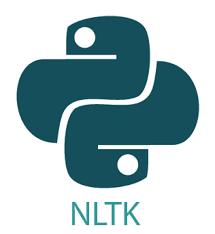
What Is Natural Language Processing (NLP)?
Natural Language Processing (NLP) is a field at the intersection of computer science, artificial intelligence, and linguistics. It’s concerned with the interactions between computers and human (natural) languages. NLP is about developing algorithms and systems that allow computers to understand, interpret, and respond to human language in a valuable and meaningful way.
NLP has a wide range of applications including speech recognition, language translation, sentiment analysis, and chatbots, among others. Its importance lies in its ability to bridge the gap between human communication and computer understanding, thereby enabling more efficient and natural human-computer interactions. From simplifying customer service inquiries to powering intelligent personal assistants, NLP plays a central role in various aspects of our digital experience.
NLP systems face many challenges, primarily due to the complexity and nuances of human language. Issues such as understanding context, sarcasm, slang, irony, and idiomatic expressions, as well as processing different languages and dialects, make NLP a continually evolving field. The rise of models based on deep learning, in particular the Transformer architecture and large language models (LLMs), has significantly impacted NLP, leading to more sophisticated and effective models which can match or exceed human performance for many tasks.
NLP Testing vs. Traditional Software Testing
NLP testing differs from traditional software testing in several ways. While traditional testing focuses on predefined inputs and expected outputs, NLP testing deals with the unpredictability and variability of human language. This includes testing for nuances, ambiguities, and the fluidity of languages. In NLP, the input (language data) is diverse and lacks formal structure, which requires a different approach to testing.
In NLP testing, the focus is not only on whether the system works but also on how well it understands and processes natural language. This involves testing for accuracy, response relevance, and the system’s ability to handle different linguistic elements like slang, idioms, and varying syntax. Moreover, NLP testing often employs techniques like machine learning model validation, data set quality assessment, and continuous performance monitoring.
Testing NLP Components
Here are a few of the essential components or functions of NLP systems and the general steps involved in testing them.
Text Classification
Text classification is one of the most common tasks in NLP. It involves categorizing text into predefined groups. For instance, in email filtering, text classification helps in categorizing emails into ‘spam’ and ‘not-spam’. In news categorization, it helps in classifying news articles into categories like ‘sports’, ‘politics’, ‘entertainment’, and so on.
Testing text classification models can be a complex task. It involves creating a robust dataset for training and validation, selecting appropriate metrics for performance evaluation, and continuously monitoring the model’s performance over time. It also involves dealing with issues like class imbalance, noisy labels, and contextual nuances.
Sentiment Analysis
Sentiment analysis, also known as opinion mining, involves determining the sentiment or emotional tone behind words. It’s used to gain an understanding of the attitudes, opinions and emotions of people in relation to certain topics.
Testing sentiment analysis models is often challenging due to the subjective nature of sentiments. It involves dealing with the ability to correctly detect emotions like anger, happiness, or sadness, aspects like sarcasm, negations, and context-dependency of sentiments. The testing process involves validating the model’s ability to accurately detect and categorize sentiments, and ensuring the model’s robustness against different kinds of text inputs.
Question Answering
Question answering systems are designed to answer questions posed in natural language. They play a crucial role in applications like virtual assistants, customer service bots, and more.
Testing of question answering systems involves validating the system’s ability to understand the question, retrieve relevant information, and generate accurate and concise answers. It also involves testing the system’s performance with different types of questions and ensuring its robustness in handling ambiguities and complexities in natural language.
Translation
Translation is another important aspect of NLP. It involves converting text from one language to another. Machine translation has made it possible to instantly translate text and speech between numerous languages.
Testing translation models involves validating the accuracy of translations, and ensuring the preservation of context and meaning. It also involves dealing with challenges like language nuances, idiomatic expressions, and cultural differences.
Summarization
Summarization involves generating a concise summary of a larger text. It’s used in various applications like news summarization, customer reviews summarization, and more.
Testing summarization models involves validating the quality of summaries, including aspects like coherence, relevance, and completeness. It also involves dealing with challenges like preserving the original meaning, dealing with redundancies, and handling different kinds of text inputs.
Conversational AI
Conversational AI involves developing systems that can engage in human-like conversation. They are used in applications like chatbots, virtual assistants, and more.
Testing conversational systems involves validating the system’s ability to understand and respond to user inputs, maintain context over a conversation, and handle different conversation flows. It also involves ensuring the system’s effectiveness in dealing with various language nuances and ambiguities.
Text Generation
Text generation involves generating human-like text based on certain inputs. It’s used in various applications like automated report generation, content generation, general purpose AI chatbots, and more.
Testing text generation models involves validating the quality of generated text, including aspects like relevance, coherence, and grammar. It also involves dealing with challenges like ensuring diversity in generated text, dealing with biases, and handling different kinds of inputs.
Sentence Similarity
Sentence similarity involves determining the similarity between two sentences. It’s used in various applications like plagiarism detection, information retrieval, and more.
Testing sentence similarity models involves validating the model’s ability to accurately measure similarity, and ensuring its robustness against different kinds of sentence pairs. It also involves dealing with issues like semantic similarity and syntactic similarity.
Challenges in NLP Testing
Ambiguity in Natural Language
One of the significant challenges in NLP testing is the inherent ambiguity in natural language. Unlike programming languages, which are explicitly designed to be unambiguous and easy for machines to parse, natural languages are full of nuances and subtleties that can be difficult to pin down.
Ambiguity can make NLP testing more difficult, because automated testing tools and metrics may be insensitive to certain types of ambiguity. This can result in ‘false negatives’, where a testing tool could provide a high score for an NLP task, whereas a human evaluation would provide a lower score.
Handling Idioms, Sarcasm, and Contextual Meanings
Another challenge in NLP testing is dealing with idioms, sarcasm, and contextual meanings. These elements of language can drastically change the meaning of a sentence. For example, the phrase “break a leg” is an idiom that means “good luck.” However, an NLP system might interpret it literally, which would be incorrect.
Similarly, sarcasm can be challenging for NLP systems to detect. Humans often use tone of voice and facial expressions to convey sarcasm, which are not available in a text-based interaction. Contextual meanings also pose a challenge. The word “bank,” for instance, could refer to a financial institution or the side of a river depending on the context. As in the case of ambiguity, automated testing tools can have difficulty identifying NLP errors of this type.
Dealing with Limited or Imbalanced Data
Lastly, dealing with limited or imbalanced data is a major hurdle in NLP testing. For an NLP system to function correctly, it needs a considerable amount of data to learn from. However, acquiring this data can be challenging, especially when dealing with less commonly spoken languages or specific domains.
Moreover, imbalanced data can cause the system to be biased towards certain outcomes. If the training data contains more instances of certain types of phrases or structures, the system will be more likely to produce those types of outputs. This can lead to inaccurate or biased results.
While there are no easy solutions for these challenges, they can be alleviated by taking a balanced approach to NLP testing, using multiple automated testing methodologies, and combining them with human evaluation of NLP outputs.
5 Open Source Tools for Automating NLP Tests
Here are a few commonly used open source tools you can use to test NLP systems.
TensorBoard
TensorBoard is a web-based tool provided by TensorFlow, a popular deep learning framework. Although primarily used for visualizing and monitoring deep learning models, it can also be leveraged for NLP testing. With TensorBoard, you can visualize the training process, track metrics, and analyze the performance of NLP models.
NLTK (Natural Language Toolkit)

NLTK is a popular open-source Python library widely used for NLP tasks. It provides a comprehensive suite of libraries, tools, and corpora, letting you perform tasks like tokenization, stemming, lemmatization, part-of-speech tagging, and more. NLTK supports standard software testing methods, including unit testing and integration testing, to check the integrity of NLP code. However it does not have specific capabilities for testing NLP algorithms themselves.
AllenNLP Interpreter
AllenNLP is a popular open-source library built on top of PyTorch, specifically designed for developing and testing NLP models. The AllenNLP Interpreter module allows you to analyze and interpret the predictions made by NLP models. It provides various interpretability techniques, such as LIME (Local Interpretable Model-Agnostic Explanations) and Integrated Gradients, to understand the decision-making process of NLP models.
TextAttack
TextAttack is a Python library specifically designed for adversarial attacks and robustness testing of NLP models. It provides a wide range of attack strategies, including synonym substitution, insertion, deletion, and transformation, to evaluate the vulnerability of NLP models to malicious inputs. TextAttack’s modular design and extensive attack recipes make it a powerful tool for uncovering and addressing weaknesses in NLP models.
BERTViz
BERTViz is a visualization tool specifically designed for testing and understanding BERT (Bidirectional Encoder Representations from Transformers) models. BERT is an NLP model that has achieved remarkable results in various language understanding tasks. BERTViz allows you to visualize and analyze the attention patterns and internal representations of BERT models, helping you gain insights into their behavior and performance.
Testing and Evaluating NLP Models with Kolena
We built Kolena to make robust and systematic ML testing easy and accessible for all organizations. With Kolena, machine learning engineers and data scientists can uncover hidden behaviors of NLP models, easily identify gaps in the test data coverage, and truly learn where and why a model is underperforming, all in minutes not weeks. Kolena’s AI / ML model testing and validation solution helps developers build safe, reliable, and fair systems by allowing companies to instantly stitch together razor-sharp test cases from their data sets, enabling them to scrutinize AI/ML models in the precise scenarios those models will be unleashed upon the real world. Kolena platform transforms the current nature of AI development from experimental into an engineering discipline that can be trusted and automated.
Among its many capabilities, Kolena also helps with feature importance evaluation, and allows auto-tagging features. It can also display the distribution of various features in your datasets.
Reach out to us to learn how the Kolena platform can help build a culture of AI quality for your team.





